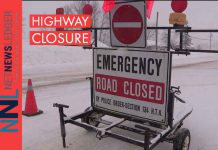America’s bridge infrastructure is in crisis. With 120,000 structurally deficient bridges across the United States, communities face both safety concerns and economic implications from deteriorating infrastructure.
“Our interstate highway system — once the envy of the world—has been graded a C by the American Society of Civil Engineers,” says Bob Hellman, CEO of American Infrastructure Partners. “We’ve got similar problems with our schools and public buildings, the need to upgrade our electric grid, the physical infrastructure of our aging postal system, and much more.”
Underinvestment in Infrastructure
This deterioration stems from decades of underinvestment in maintenance. While the landmark $1.2 trillion infrastructure bill of 2021 provided some funding, it falls far short of addressing the full scope of the problem.
As Hellman points out, “If you spread it across the country equitably, it results in about $80 million per state per year over six years. A single bridge costs about a hundred million dollars. That’s tantamount to enough money to maybe fix that’s out there, but not to maintain it.”
According to the American Road & Transportation Builders Association, nearly 221,800 U.S. bridges need major repair or replacement. These structures span over 6,100 miles — equivalent to every mile of urban and rural interstate in California, Florida, and Illinois combined. Of these, 42,067 bridges are rated in poor condition and classified as “structurally deficient.”
Addressing this backlog would require increasing annual bridge rehabilitation spending from $14.4 billion to $22.7 billion — a 58% increase. At current investment rates, completing necessary repairs would take until 2071, during which time additional deterioration will compound the problem.
Traditional government approaches to infrastructure development often face significant challenges in construction and maintenance. “When a local government tries to conduct a big infrastructure project, it’s probably the first bridge that the mayor has ever built,” Hellman said recently.
A lack of specialized expertise can contribute to consistent cost overruns in public infrastructure projects. In a recent op-ed, Hellman noted that Boston’s Big Dig exceeded its budget by nearly 600%, California’s High-Speed Rail is tracking toward at least 300% over budget, and the Gordie Howe Bridge between the United States and Canada is now expected to cost 127% more than initial estimates.
American Infrastructure Partners’ Solution
American Infrastructure Partners has developed a platform-based approach to address these challenges. It creates dedicated platform companies focused on specific infrastructure categories, each combining specialized expertise with dedicated capital pools.
United Bridge Partners, American Infrastructure Partners’ bridge-focused platform, illustrates this specialized method. With over 40 professionals specifically focused on bridge construction and rehabilitation, UBP has built expertise in bridge repair and replacement.
“We have opened four new bridges of a hundred million dollars or more,” says Hellman
This cost efficiency is particularly important given the financial constraints facing many communities. The ARTBA estimates repairing all 221,800 bridges in need would cost over $400 billion.
“The scale of the problem is simply too big for the government to handle on its own,” wrote Hellman. “Luckily, the rise of institutional private infrastructure funds over the past 40 years has created an industry with more than $4.5 trillion under management.”
Private infrastructure turns the cost and risk of select public capital projects over to private investors. This eliminates the financial burden on taxpayers while avoiding asking local governments to manage projects about which they may have less knowledge or experience.
“Private infrastructure brings together deep-pocketed investors and those with the know-how to build projects on time and on budget,” wrote Hellman.
The company’s South Norfolk Jordan Bridge project in Chesapeake, Virginia, demonstrates this in action. When the original 1928 bridge deteriorated beyond repair, the city lacked funds for replacement. UBP stepped in, removing the old bridge for $3 million — eliminating a financial burden for Chesapeake and Portsmouth — then built the new bridge for $143 million.
The project not only provided essential transportation infrastructure but also transformed the adjacent Elizabeth River Park into a community hub with modern amenities including walking paths connecting directly to the bridge. The park now features a covered pavilion, picnic tables, a snack shack, updated restrooms, and improved boating and fishing facilities.
Similarly, the Houbolt Road Extension bridge in Joliet, Illinois, demonstrates how private infrastructure can address multiple community needs simultaneously. This privately-financed project improved transportation efficiency, reduced environmental impacts, and enhanced safety. Since opening, it’s streamlined truck routes and reduced local traffic congestion by providing direct access to I-80, cutting truck idle time by about 20,540 hours annually. This has resulted in savings of around $122,000 each year in fuel, mileage, and maintenance costs.
What sets AIP apart from traditional infrastructure funding models is its focus on timely construction and long-term maintenance.
“Every day that a highway remains under construction or a power plant is not completed is one more day that their investors aren’t making a return,” wrote Hellman, highlighting the built-in incentives for efficient project delivery.
Tax-Funded Infrastructure Repair: ‘Simply Insufficient’
Despite these advantages, private infrastructure funding can face political resistance, says Hellman.
“In the United States, when an elected leader suggests bringing in private funding for public projects, they’re shouted down,” he wrote. “Yet traditional tax-funded infrastructure repair and creation have proven simply insufficient.”
Looking ahead, addressing America’s deteriorating bridges will require a multifaceted plan of attack. The American Society of Civil Engineers recommends “a balanced approach for our current aging bridge inventory that emphasizes preservation, rehabilitation, and replacement where necessary, while also setting aside funding for critical operation and maintenance.”
Private infrastructure companies like American Infrastructure Partners demonstrate that alternative funding models can effectively address infrastructure challenges through specialized expertise, sufficient scale to achieve operational efficiencies, and professional management of community relationships.








